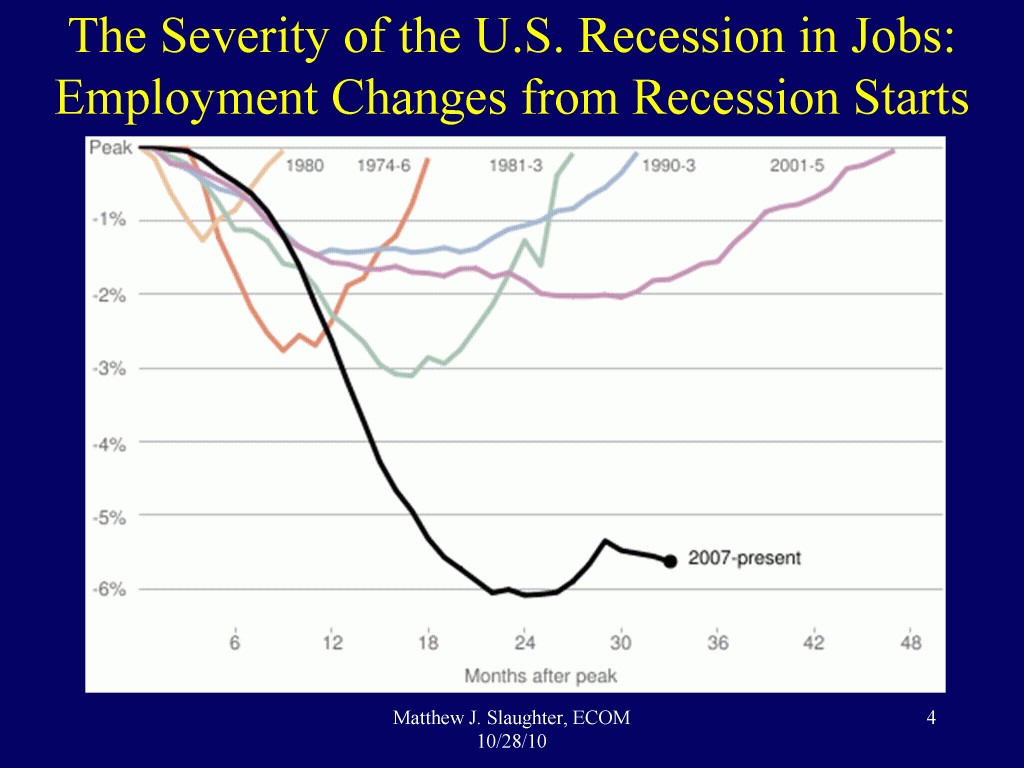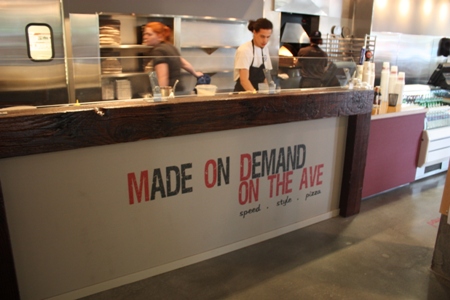Archive for the ‘Design Engineers’ Category
Your product costs are twice what they should be.
 Your product costs are twice what they should be. That’s right. Twice.
Your product costs are twice what they should be. That’s right. Twice.
You don’t believe me. But why? Here’s why:
If 50% cost reduction is possible, that would mean you’ve left a whole shitpot of money on the table year-on-year and that would be embarrassing. But for that kind of money don’t you think you could work through it?
If 50% cost reduction is possible, a successful company like yours would have already done it. No. In fact, it’s your success that’s in the way. It’s your success that’s kept you from looking critically at your product costs. It’s your success that’s allowed you to avoid the hard work of helping the design engineering community change its thinking. But for that kind of money don’t you think you could work through it?
Even if you don’t believe 50% cost reduction is possible, for that kind of money don’t you think it’s worth a try?
WHY, WHAT, HOW, and new thinking for the engineering community.
 Sometimes we engineers know the answer before the question, sometimes we know the question’s wrong before it’s asked, and sometimes we’re just plain pig-headed. And if we band together, there’s no hope of changing how things are done. None. So, how to bring new thinking to the engineering community? In three words: WHAT, WHY, HOW.
Sometimes we engineers know the answer before the question, sometimes we know the question’s wrong before it’s asked, and sometimes we’re just plain pig-headed. And if we band together, there’s no hope of changing how things are done. None. So, how to bring new thinking to the engineering community? In three words: WHAT, WHY, HOW.
WHY – Don’t start with WHAT. If you do, we’ll shut down. You don’t know the answer, we do. And you should let us tell you. Start with WHY. Give us the context, give us the problem, give us the business fundamentals, give us the WHY. Let us ask questions. Let us probe. Let us understand it from all our angles. Don’t bother moving on. You can’t. We need to kick the tires to make sure we understand WHY. (It does not matter if you understand WHY. We need understand it for ourselves, in our framework, so we can come up with a solution.)
WHAT – For God’s sake don’t ask HOW – it’s too soon. If you do, we’ll shut down. You don’t know the answer, we do. And, if you know what’s good for you, you should let us tell you. It’s WHAT time. Share your WHAT, give us your rationale, explain how your WHAT follows logically from your WHY, then let us ask questions. We’ll probe like hell and deconstruct your WHY-WHAT mapping and come up with our own, one that makes sense to us, one that fits our framework. (Don’t worry, off-line we’ll test the validity of our framework, though we won’t tell you we’re doing it.) We’ll tell you when our WHY-WHAT map holds water.
HOW – Don’t ask us WHEN! Why are you in such a hurry to do it wrong?! And for sanity’s sake, don’t share your HOW. You’re out of your element. You’ve got no right. Your HOW is not welcome here. HOW is our domain – exclusively. ASK US HOW. Listen. Ask us to explain our WHAT-HOW mapping. Let us come up with nothing (that’s best). Let us struggle. Probe on our map, push on it, come up with your own, one that fits your framework. Then, and only then, share how your HOW fits (or doesn’t) with ours. Let us compare our mapping with yours. Let us probe, let us question, let us contrast. (You’ve already succeeded because we no longer see ours versus yours, we simply see multiple HOWs for consideration.) We’ll come up with new HOWs, hybrid HOWs, all sorts of HOWs and give you the strengths and weaknesses of each. And if your HOW is best we’ll recommend it, though we won’t see it as yours because, thankfully, it has become ours. And we’ll move heaven and earth to make it happen. Engineering has new thinking.
Whether it’s my favorite new thinking (product simplification) or any other, the WHY, WHAT, HOW process works. It works because it’s respectful of our logic, of our nature. It fits us.
Though not as powerful a real Vulcan mind meld, WHY, WHAT, HOW is strong enough to carry the day.
I don’t know the question, but the answer is jobs.
 Some sobering facts: (figure and facts from Matt Slaughter)
Some sobering facts: (figure and facts from Matt Slaughter)
- During the Great Recession, US job loss (peak to trough) was 8.4 million payroll jobs were lost (6.1%) and 8.5 million private-sector jobs (7.3%).
- In Sept. 2010 there were 108 million U.S. private-sector payroll jobs, about the same as in March 1999.
- It took 48 months to regain the lost 2.0% of jobs in the 2001 recession. At that rate, the U.S. would again reach 12/07 total payroll jobs around January 2020.
The US has a big problem. And I sure as hell hope we are willing do the hard work and make the hard sacrifices to turn things around.
To me it’s all about jobs. To create jobs, real jobs, the US has got to become a more affordable place to invent, design, and manufacture products. Certainly modified tax policies will help and so will trade agreements to make it easier for smaller companies to export products. But those will take too long. We need something now.
To start, we need affordability through productivity. But not the traditional making stuff productivity, we need inventing and designing productivity.
Here’s the recipe: Invent technology in-country, design and develop desirable products in-country (products that offer real value, products that do something different, products that folks want to buy), make the products in-country, and sell them outside the country. It’s that straightforward.
To me invention/innovation is all about solving technical problems. Solving them more productively creates much needed invention/innovation productivity. The result: more affordable invention/innovation.
To me design productivity is all about reducing product complexity through part count reduction. For the same engineering hours, there are few things to design, fewer things to analyze, fewer to transition to manufacturing. The result: more affordable design.
Though important, we can’t wait for new legislation and trade agreements. To make ourselves more affordable we need to increase productivity of our invention/innovation and design engines while we work on the longer term stuff.
If you’re an engineering leader who wants more about invention/innovation and or design productivity, send me an email at
and use the subject line to let me know which you’re interested in. (Your contact information will remain confidential and won’t be shared with anyone. Ever.)
Together we can turn around the country’s economy.
A Call To Arms for Engineers
 Engineers make magic. We are the only ones who create things from nothing: cars, televisions, bridges, buildings, machine tools, molecules, software… (You get the idea.) Politicians can’t do it, lawyers can’t do it, MBAs can’t do it. Only engineers.
Engineers make magic. We are the only ones who create things from nothing: cars, televisions, bridges, buildings, machine tools, molecules, software… (You get the idea.) Politicians can’t do it, lawyers can’t do it, MBAs can’t do it. Only engineers.
And the stuff we create is the foundation of sustainable economies. We create things, our companies sell them for a profit, and that profit creates wealth and fuels our economies – a tight causal chain. Said another way: no engineers, no products, no profits, no wealth, no economy. The end.
Engineers used to be valued for our magic. In medieval times we were given high status for our art, for making stuff that mattered: swords, trebuchets, armor, castles… (You get the idea.) And the best of us were given a special title (wizard) and special consideration (if not reverence) for our work. These folks were given a wide berth, and for good reason. Piss them off and they’d turn someone into a toad, or worse yet, stop making the stuff that mattered.
In the industrial revolution we were valued for our magic, for making stuff that mattered. This time it was the machines that made machines and weapons: water powered factories, gun drills, lathes, grinding machines, honing machines… (You get the idea.) Politicians used our magic to advance their causes and industrialists got rich on our magic, and our status was diminished.
Since then we’ve made more magic than ever: cars, televisions, bridges, buildings, machine tools, molecules, software… (You get the idea.) We still make magic yet have little influence over our how our companies do things. How did we let this happen? We forgot that we make magic.
We forgot our magic is valuable and powerful (and scary). We forgot that without our magic the wheels fall off. No magic, no profit, no economy.
Engineers – A call to arms! It’s time recognize our magic is still as powerful as Merlin’s and it’s time to behave that way again. Watch out politicians, lawyers, and MBAs or we’ll turn you into toads.
What if labor was free?
 The chase for low cost labor is still alive and well. And it’s still a mistake. Low cost labor is fleeting. Open a plant in a low cost country and capitalism takes immediate hold. Workers see others getting rich off their hard work and demand to be compensated. It’s an inevitable death spiral to a living wage. Time to find the next low cost country.
The chase for low cost labor is still alive and well. And it’s still a mistake. Low cost labor is fleeting. Open a plant in a low cost country and capitalism takes immediate hold. Workers see others getting rich off their hard work and demand to be compensated. It’s an inevitable death spiral to a living wage. Time to find the next low cost country.
The truth is labor costs are an extremely small portion of product cost. (The major cost, by far, is the material and the associated costs of moving it around the planet and managing its movement.) And when design engineers actively design out labor costs (50% reductions are commonplace) it becomes so small it should be ignored altogether. That’s right – ignored. No labor costs. Free labor. What would you do if labor was free?
Eliminate labor costs from the equation and it’s clear what to do. Make it where you can achieve the highest product quality, make it where you can run the smallest batches, and make it where you sell it. Design out labor and you’re on your way.
Design engineers are the key. Only they can design out labor. Management can’t do it without engineers, but engineers can do it without management.
A call to arms for design engineers: organize yourselves, design out labor, and force your company to do the right thing. Your kids and your economy will thank you.
Cure for offshoring: The design side of product development, from Machine Design
 A recent article written by Leslie Gordon of Machine Design.
A recent article written by Leslie Gordon of Machine Design.
You have probably seen it yourself: images of Chinese workers toiling in mud-floored factories, each feeding a separate punch press, as if part and parcel of a living, progressive die. The lure of this cheap labor has sent many U.S. manufacturers scrambling overseas to cut production costs.
Although design-for-manufacturing tools that would have made this exodus unnecessary have been around for more than 20 years, companies continue to overlook them, says Mike Shipulski, chief engineer of plasma-cutter manufacturer Hypertherm, hypertherm.com, Hanover, N.H. “Companies are sticking their heads in the sand. Many U.S. firms have become too entrenched in doing things the same way. For example, a typical product-cost breakdown shows material to be the largest cost at about 72%. Overhead is around 24% and labor is only about 4%. The question becomes, why continue to move manufacturing to so-called ‘low-cost countries’ to chase 50% labor reductions for a whopping 2% cost reduction? And it’s sillier than that because companies don’t account for cost increases in shipping and quality control.”
The problem is that companies neglect to efficiently account for cost during the design side of product development….
The design community has the biggest lever
 In sourcing, out sourcing, off shoring, on shoring – the manufacturing debate rages. So what’s the big deal? Jobs – the foundation of an economy. Jobs pay for things, important things like food, schools, and healthcare. No jobs, no economy. The end.
In sourcing, out sourcing, off shoring, on shoring – the manufacturing debate rages. So what’s the big deal? Jobs – the foundation of an economy. Jobs pay for things, important things like food, schools, and healthcare. No jobs, no economy. The end.
What does lean, the most successful manufacturing business methodology, have to say about all this? Lean’s fundamental:
a
Make it where you sell it
a
because the shortest supply chains are least wasteful. Dig the ore in-country, make the steel in-country, forge it, machine it, and sell it in-country. With, of course, some qualifiers, some important ifs:
- If in-country demand is high enough to warrant the investment
- If your company is big enough to pull it off
- If quality can be assured.
All good, but I’m discouraged by what lean does not say:
- Regardless of the country, engage the design community to reduce material cost and waste
- Regardless of the factory, engage design community to make your factory output like two
- Regardless of the industry, engage design community to reduce part count.
We all agree the design community has the biggest influence on cost and waste, yet they’re not part of the lean equation. That’s wasteful. That violates a fundamental. That makes me sad.
Let’s put aside our where-to-make-it arguments for a bit, and, wherever you make product,
a
Engage the design community in lean.
Don’t bankrupt your suppliers – get Design Engineers involved.
 Cost Out, Cost Down, Cost Reduction, Should Costing – you’ve heard about these programs. But they’re not what they seem. Under the guise of reducing product costs they steal profit margin from suppliers. The customer company increases quarterly profits while the supplier company loses profits and goes bankrupt. I don’t like this. Not only is this irresponsible behavior, it’s bad business. The savings are less than the cost of qualifying a new supplier. Shortsighted. Stupid.
Cost Out, Cost Down, Cost Reduction, Should Costing – you’ve heard about these programs. But they’re not what they seem. Under the guise of reducing product costs they steal profit margin from suppliers. The customer company increases quarterly profits while the supplier company loses profits and goes bankrupt. I don’t like this. Not only is this irresponsible behavior, it’s bad business. The savings are less than the cost of qualifying a new supplier. Shortsighted. Stupid.
The real way to do it is to design out product cost, to reduce the cost signature. Margin is created and shared with suppliers. Suppliers make more money when it’s done right. That’s right, I said more money. More dollars per part, and not more from the promise of increased sales. (Suppliers know that’s bullshit just as well as you, and you lose credibility when you use that line.) The Design Engineering community are the only folks that can pull this off.
Only the Design Engineers can eliminate features that create cost while retaining features that control function. More function, less cost. More margin for all. The trick: how to get Design Engineers involved.
There is a belief that Design Engineers want nothing to do with cost. Not true. Design Engineers would love to design out cost, but our organization doesn’t let us, nor do they expect us to. Too busy; too many products to launch; designing out cost takes too long. Too busy to save 25% of your material cost? Really? Run the numbers – material cost times volume times 25%. Takes too long? No, it’s actually faster. Manufacturing issues are designed out so the product hits the floor in full stride so Design Engineers can actually move onto designing the next product. (No one believes this.)
Truth is Design Engineers would love to design products with low cost signatures, but we don’t know how. It’s not that it’s difficult, it’s that no one ever taught us. What the Design Engineers need is an investment in the four Ts – tools, training, time, and a teacher.
Run the numbers. It’s worth the investment.
Material cost x Volume x 25%
Anyone want to save $50 billion?
 I read a refreshing article in the Washington Post. Defense Secretary Robert M. Gates wants to save $20B per year on the Pentagon’s spend. I could kiss this guy!
I read a refreshing article in the Washington Post. Defense Secretary Robert M. Gates wants to save $20B per year on the Pentagon’s spend. I could kiss this guy!
Gates wants contracts scrutinized more closely for inefficiencies and unneeded overhead. He said the savings could be shifted to support U.S. troops around the globe. Pentagon officials said they’re looking for annual savings in the $400 billion spent on goods and services. They’re looking to save $20B, or 5%.
Gates has it right. The government must stop overpaying. But how? Gates suggests improved contract scrutiny to eliminate inefficiencies and unneeded overhead. He’s on the right track, but that’s not where the money is. Gates’ real target should be material cost – that’s where the money is. But, can material cost bring $20B savings? Yes.
Assume the Pentagon spends $100B on services and $300B on goods. The cost of those of goods falls into three buckets: labor, material, and overhead, where material cost makes up the lion’s share at 70%, or $210B. A 10% reduction in material cost brings $21B in savings, and gets Gates to his target. But how?
To get the savings, the Pentagon must drive the right behavior. They must must make suppliers submit a “should cost” with all proposals. The should cost is an estimated cost based on part geometries, materials, manufacturing processes used to create the parts, prevailing wage rates and machine rates, and profit. From these parameters, a should cost can be created in the design phase, without actually making the parts. So, the Pentagon will know what they should pay before the product is made. This cost analysis is based on real data, real machines, and real material costs. There is no escape for defense contractors. The cash cow is no longer.
Should costing will drive the design engineers to create designs that work better and cost less, something the defense industry thinks is impossible. They’re wrong. Given the tools, time, and training, the defense industry’s design engineering community can design out at least 25% of material cost, resulting in $50B+ in savings, more than twice Gates’ goal. Someone just has to teach them how.
Mr. Secretary, the non-defense world is ready to help. Just ask us. (But we’ll go after a 50% cost reduction.)
Custom Model, exploring customized manufacturing (Mechanical Engineering Magazine)
 By reducing parts count and easing assembly, one plasma cutter maker explores customized manufacturing.
By reducing parts count and easing assembly, one plasma cutter maker explores customized manufacturing.
By Jean Thilmany, Associate Editor, Mechanical Engineering Magazine
Ask nearly any engineer or manufacturer about customized manufacturing and—to a person—they’ll all say the same thing: Have you heard the Dell story?
Dell is offered up again and again as the number one example of customized manufacturing done right and done successfully. Shortly after its founding in 1984, Dell began what it calls a configure-to-order approach to manufacturing. The computer company lets customers customize their own computers on the Dell Web site. Buyers select how much memory and disk space they desire and the resulting computer is manufactured and shipped to them.
The approach has helped the computer maker see skyrocket growth. Last year, it held the second-highest spot for desktops and laptops shipped, behind Hewlett Packard, according to market-share numbers from research firm International Data Corp. in Framingham, Mass.
Manufacturers—particularly electronics manufacturers—have long been taking notice. Many of them are investigating how the configure-to-order model could be put to use at their own companies. And some of them have implemented the method—along with the necessary software to get the job done—with great success.
Take Hypertherm Inc. of Hanover, N.H., maker of plasma metal cutting equipment. The company has recently started allowing customers to choose online from ten CNC Edge Pro product configurations, up from three configurations in the former product line, said John Sobr, head designer on the project.
Hypertherm recently redesigned its plasma metal cutting equipment to reduce part count by 27 percent while doubling the number of inputs available. Customers can now choose from ten product configurations.
Pareto’s Three Lenses for Product Design
 Axiom 1 – Time is short, so make sure you’re working on the most important stuff.
Axiom 1 – Time is short, so make sure you’re working on the most important stuff.
Axiom 2 – You can’t design out what you can’t see.
In product development, these two axioms can keep you out of trouble. They’re two sides of the same coin, but I’ll describe them one at a time and hope it comes together in the end.
With Axiom 1, how do you make sure you’re working on the most important stuff? We all know it’s function first – no learning there. But, sorry design engineers, it doesn’t end with function. You must also design for lean, for cost, and factory floor space. Great. More things to design for. Didn’t you say time was short? How the hell am I going to design for all that?
Now onto the seeing business of Axiom 2. If we agree that lean, cost, and factory floor space are the right stuff, we must “see it” if we are to design it out. See lean? See cost? See factory floor space? You’re nuts. How do you expect us to do that?
Pareto to the rescue – use Pareto charts to identify the most important stuff, to prioritize the work. With Pareto, it’s simple: work on the biggest bars at the expense of the smaller ones. But, Paretos of what?
There is no such thing as a clean sheet design – all new product designs have a lineage. A new design is based on an existing design, a baseline design, with improvements made in several areas to realize more features or better function defined by the product specification. The Pareto charts are created from the baseline design to allow you to see the things to design out (Axiom 2). But what lenses to use to see lean, cost, and factory floor space?
Here are Pareto’s three lenses so see what must be seen:
To lean out lean out your factory, design out the parts. Parts create waste and part count is the surrogate for lean.
To design out cost, measure cost. Cost is the surrogate for cost.
To design out factory floor space, measure assembly time. Since factory floor space scales with assembly time, assembly time is the surrogate for factory floor space.
Now that your design engineers have created the right Pareto charts and can see with the right glasses, they’re ready to focus their efforts on the most important stuff. No boiling the ocean here. For lean, focus on part count of subassembly 1; for cost, focus on the cost of subassemblies 2 and 4; for floor space, focus on assembly time of subassembly 5. Leave the others alone.
Focus is important and difficult, but Pareto can help you see the light.



 Mike Shipulski
Mike Shipulski